Although its function is to store information, the genetic material within our cells is surprisingly labile. DNA can react with several cellular metabolites, such as aldehydes and reactive oxygen species, different chemical and physical agents that surround us, such as cigarette smoke, ultraviolet radiation or radioactivity, not to mention water itself, so that DNA needs to be constantly repaired as faithfully as possible to avoid the accumulation of mutations that cause cancer, aging and neurodegeneration.
We study the molecular pathways by which these DNA lesions are signalled and repaired, using molecular and cellular biology techniques such as western blotting, fluorescence microscopy, CRISPR/Cas9 technology and functional assays. The different research projects in our lab fall basically within three main areas of interest:
ADP-ribosylation and DNA repair
ADP-ribosylation is a post-translational modification of proteins with important roles in signaling the presence of DNA damage, in chromatin remodeling and recruitment of DNA repair factors to the damage site, as well as in a programmed cell death pathway called parthanatos. This modification is catalyzed by a class of enzymes termed poly(ADP-ribose) polymerases (PARPs), several of which are activated by DNA lesions. Hundreds of proteins may be modified by ADP-ribose, many more recognize and bind this modification, while other enzymes are involved in removing this “signal” after the damage has been repaired. We aim to understand the molecular mechanisms by which each of these events signals the presence of DNA lesions and accelerates their repair. (Figure 1)
DNA repair and rare genetic disosders
Several rare genetic syndromes are caused by mutations in genesinvolved in DNA damage signaling and repair. These diseases are generally chracterized by cancer predisposition, premature aging, immunodeficiency and/or neurological manifestations, such as neurodegeneration or microcephaly. We study the molecular consequences of patient mutations to understand the mechanisms that contribute to these pathologies and identify possible therapeutic alternatives.
Roles of ADP-ribosylation in other signaling pathways
A third topic of interest for the laboratory, which has been gaining ground especially during (and after) the COVID-19 pandemic, is the function of ADP-ribosylation of proteins in response to other processes, such as the cellular response to viral infections. Some viruses, including the coronavirus, express an enzyme whose function is to hydrolyze (i.e. remove) ADP-ribosylation of proteins, which is catalyzed by host enzymes as part of the cell’s antiviral response. In this context, we seek to understand how ADP-ribosylation contributes to the immune response, what the role of this viral domain during infection is and whether the inhibition of this viral enzyme can be a therapeutic target.
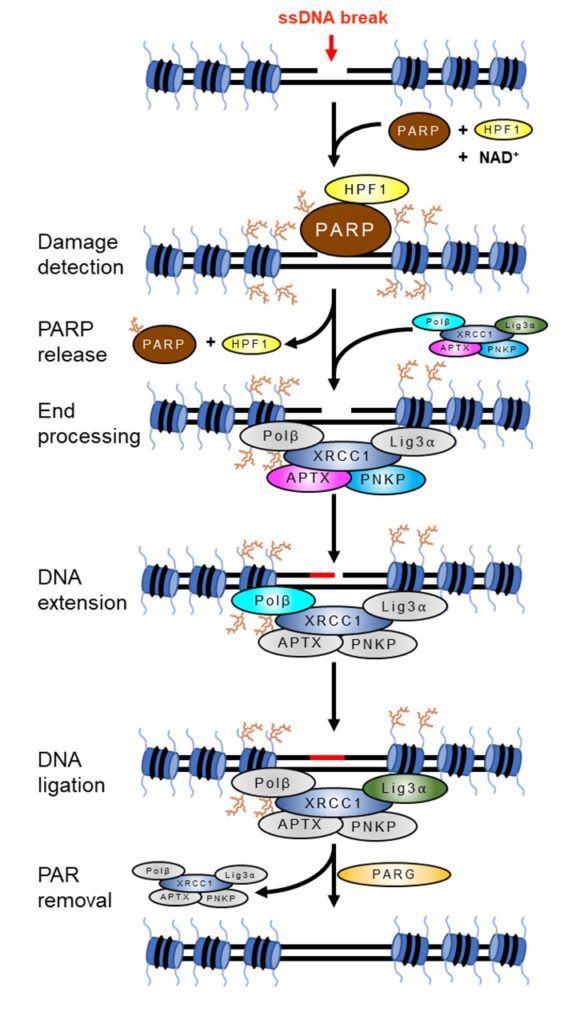
-
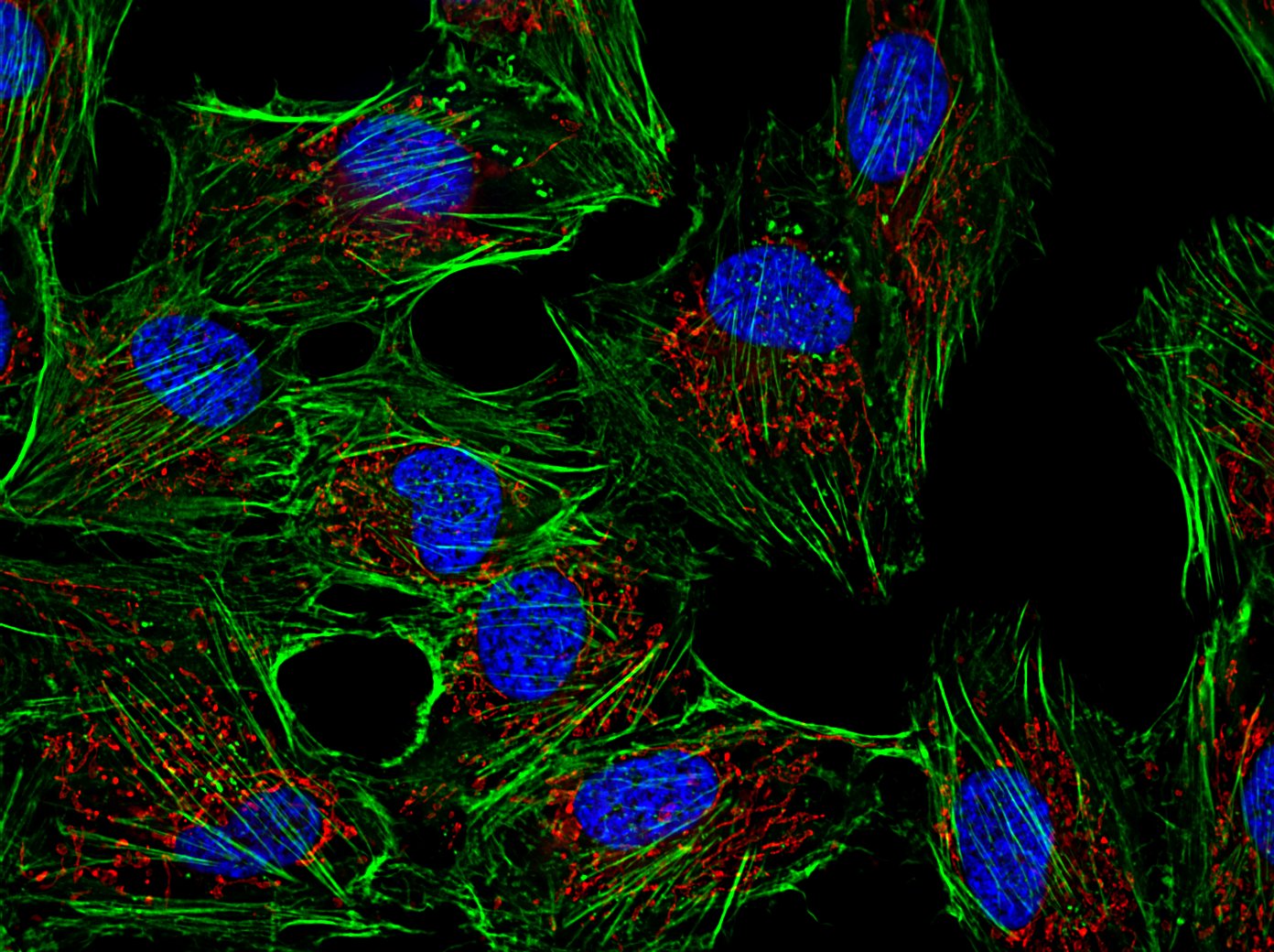
- Fluorescence microscopy of human cells in culture. Blue: DNA in the cell nucleus, green: actin filaments, red: mitochondria.
-
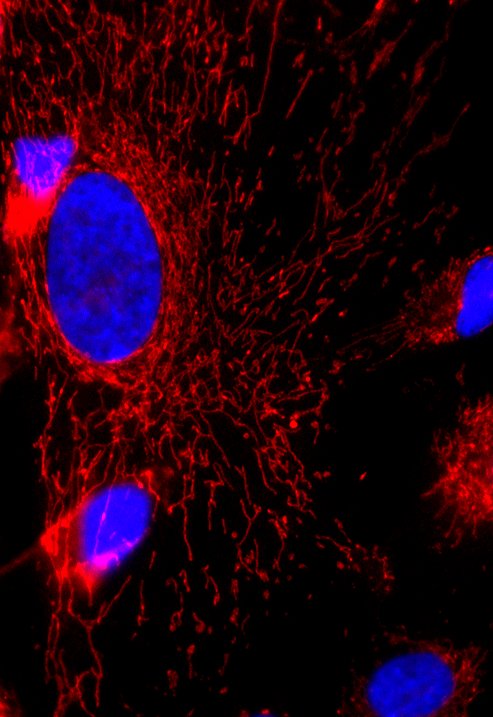
- Fluorescence microscopy of human cells in culture. Blue: DNA in the cell nucleus, red: mitochondria.
-
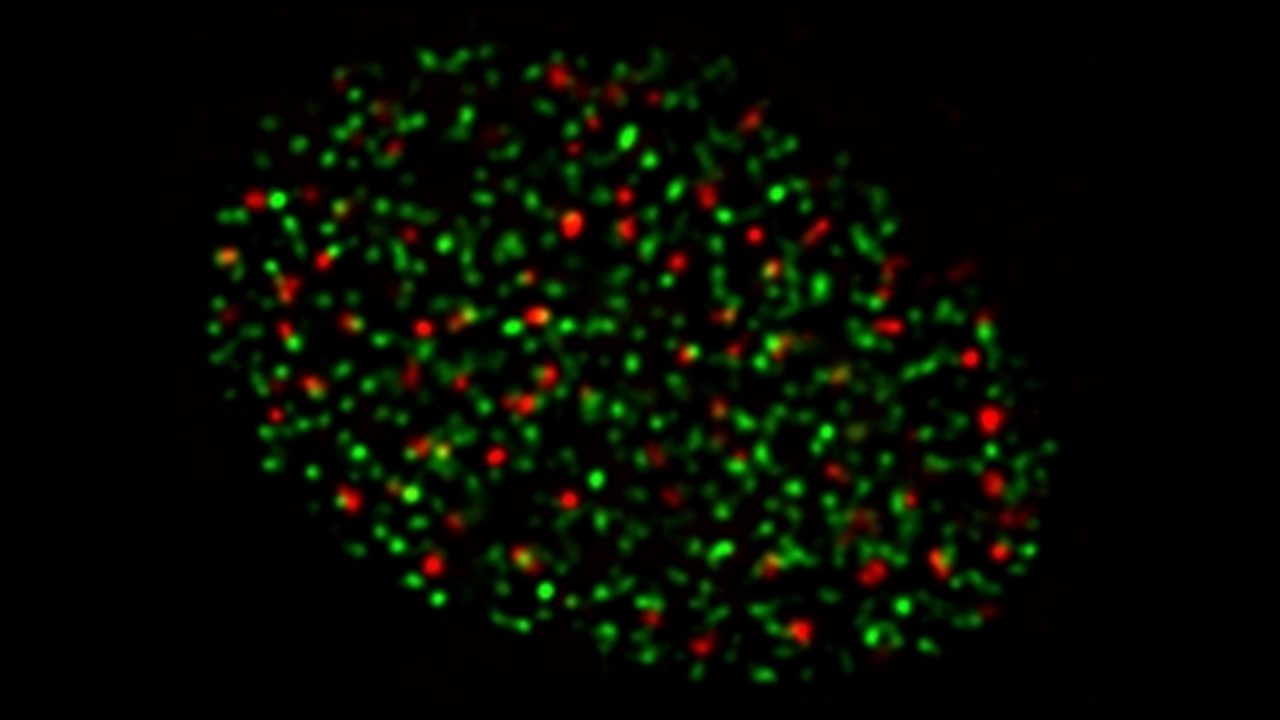
- Fluorescence microscopy of the nucleus of a human cell during S phase of the cell cycle. Green: regions of the nucleus in which there is ongoing DNA replication, red: phosphorylation of histone H2AX, a marker of DNA damage.
-
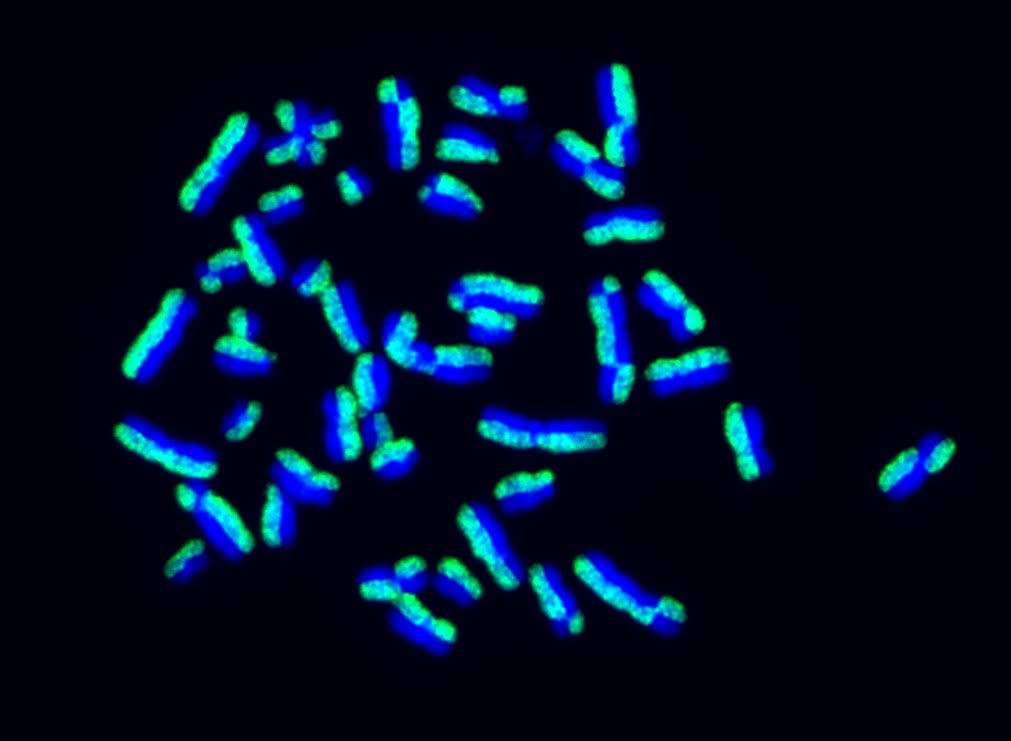
- Fluorescence microscopy of a sister chromatid exchange assay. Chromosomes from a human cell are labelled such that one sister chromatid is seen in green and the other in blue. In response to DNA damage, homologous recombination may lead to the exchange of genetic information between sister chromatids, causing a reciprocal exchange in the colouring pattern of the chromosomes.
-
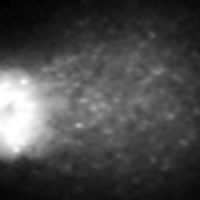
- Comet assay, which measures DNA damage via migration of nuclear DNA in agarose gels. Intact DNA forms the comet “head”, while damaged DNA fragments migrate faster and form a comet “tail”.
-
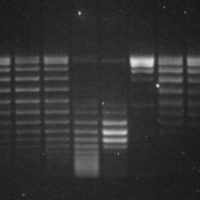
- Agarose gel from a topoisomerase activity assay. Supercoiled plasmid DNA (lane 2) migrates faster than relaxed DNA (subsequent lanes).
-
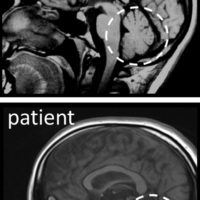
- Brain MRI of a normal individual and of a patient with cerebellar degeneration (indicated by a circle), caused by mutations in a DNA repair gene.
-
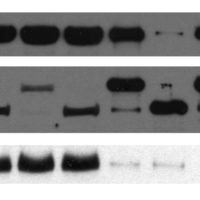
- Representative image of a western blot, showing differences between samples, both in size as well as abundance of the detected proteins.
